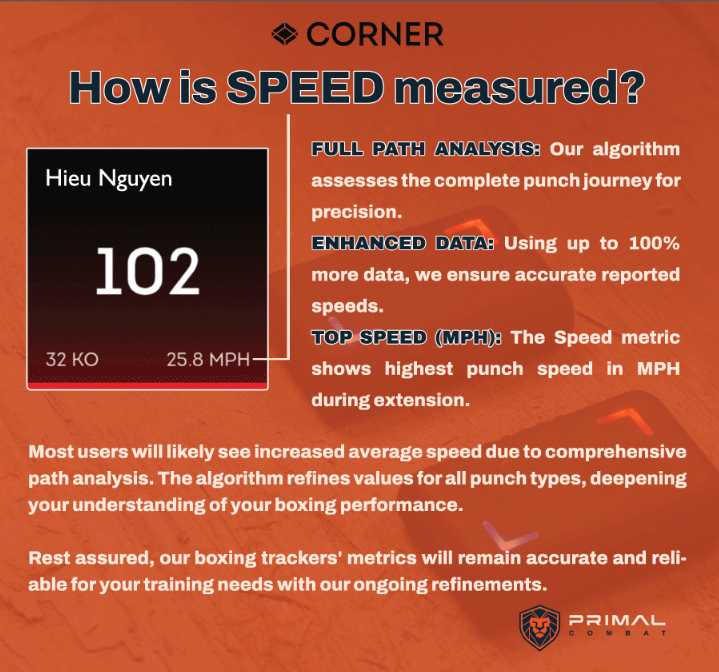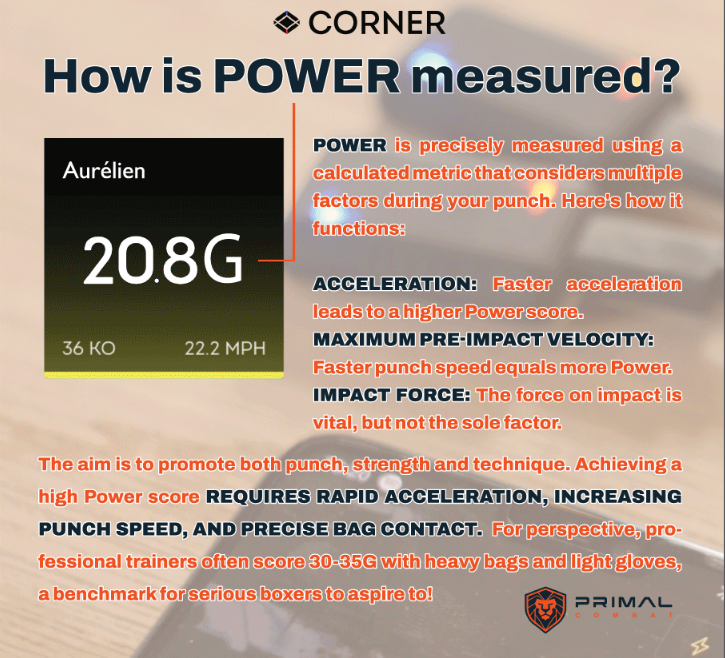
1. Speed Measurement

Speed is all about the velocity of each punch, and it’s measured using advanced algorithms that track the entire punch path. The Full Path Analysis captures the complete journey of the punch, allowing for a precise assessment. Enhanced data accuracy, driven by extensive data analysis, ensures each punch’s speed is reported with high precision. Ultimately, the Top Speed metric shows your highest punch speed in miles per hour (MPH), giving you a clear benchmark of your progress and potential.
2. Power Measurement

Power in boxing is a combination of speed, force, and acceleration. This metric is carefully calculated to highlight punch intensity. Factors include:
Acceleration: Faster acceleration boosts the Power score.
Maximum Pre-Impact Velocity: The punch’s speed just before impact.
Impact Force: While not the sole factor, the force on impact contributes significantly to the power score. Achieving a high Power score means balancing strength, technique, and rapid acceleration. For comparison, professional boxers often score between 30-35G with heavy bags and light gloves, setting a high standard for aspiring athletes.
3. Punch Count and K.O. Points

Punch count tracks the total number of punches within a session, but the quality of those punches is also essential. K.O. Points measure each punch on a 1 to 10 scale, accounting for speed, power, and output. This metric adapts to all skill levels, ensuring that individuals of varying body types and fitness levels can track progress meaningfully. K.O. Points allow you to gauge your work rate, output, and overall punch quality, encouraging consistent improvement with every session.
By analyzing these metrics, you gain insights into both your strengths and areas for improvement. With each punch, you’re not only working toward physical strength but also refining the quality and efficiency of your performance.





 15 Nov 2024
15 Nov 2024
